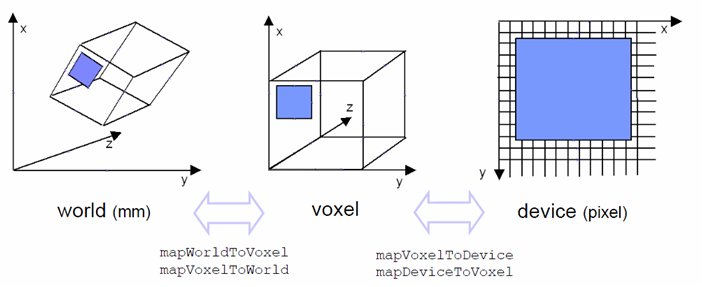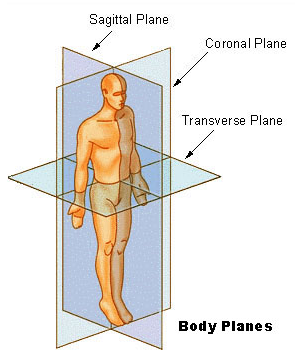Data Import
Example 1: Data import in MeVisLab
Example 1: Data Import in MeVisLab
MeVisLab provides several pre-defined modules to import data for processing in your networks.
These chapters explain the data formats and modules related to this example:
Example 1.1: MeVisLab Coordinate Systems
Example 1.1: MeVisLab Coordinate Systems
Three coordinate systems exist next to each other:
- World coordinates
- Voxel coordinates
- Device coordinates
World coordinate systems in MeVisLab are always right handed.
The blue rectangle shows the same region in the three coordinate systems.

World coordinates
World coordinates are:
- Global: Combine several objects in a view
- Isotropic: All directions are equivalent
- Orthogonal: Coordinate axes are orthogonal to each other
The origin of the world coordinate system can be anywhere and is not clearly defined. Origins of the other coordinate systems can always be mapped to the world coordinate system. In case of DICOM images, this mapping is defined by DICOM tags.
Example 1.2: DICOM Coordinate Systems
Example 1.2: DICOM Coordinate Systems
General
Coordinate systems in DICOM are basically the same as world coordinates in MeVisLab (except for the 0.5 voxel offset). World coordinates also refer to the patient axes. They are:
- Based on the patient’s main body axes (transverse, coronal, sagittal)
- Measured as 1 coordinate unit = 1 millimeter
- Right-handed
- Not standardized regarding their origin



